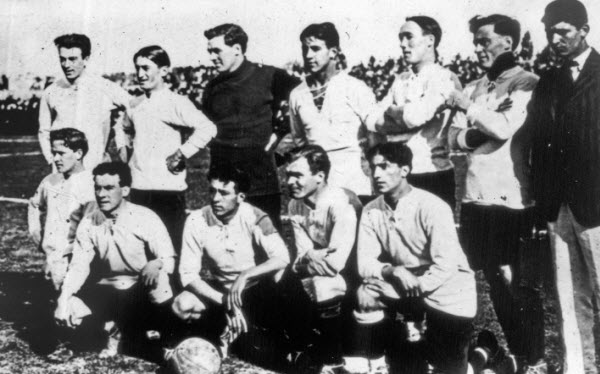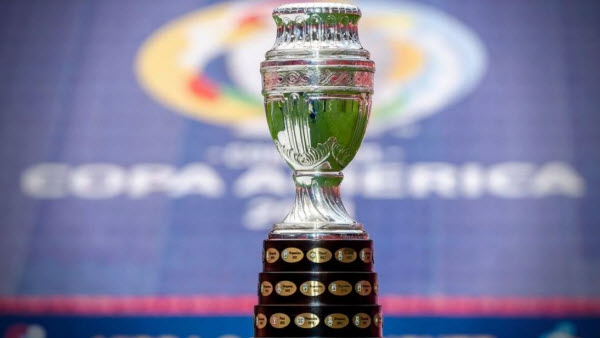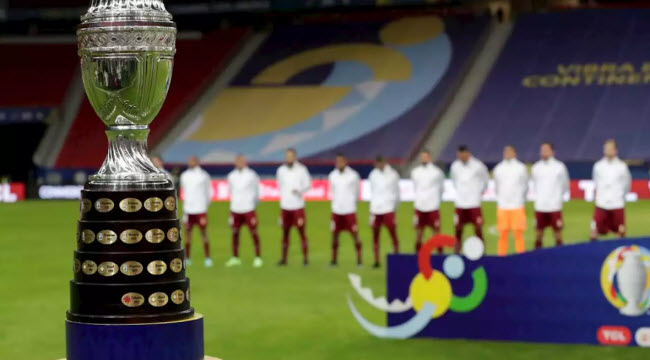Copa América is one of the most prestigious and oldest continental football tournaments, dating back to 1916. It features teams from South America and is considered the third most-watched football competition worldwide. Currently held every four years, it is unique in inviting teams from other continents, such as Mexico and Japan, due to the limited number of South American countries (only 10 national teams). Since its inception, every South American nation except Venezuela and Ecuador has won the tournament. Argentina and Uruguay are the most successful teams, each claiming the title 15 times. In 2016, for the first time, the competition was hosted outside South America, in the United States. This tournament has long been a platform for showcasing the talents of South American players, many of whom have left an indelible mark on global football.
The History of Copa América
Copa América’s roots trace back to the early days of football in South America. The first football club in the region, the Lima Cricket and Football Club, was founded in Peru in 1859, and Argentina’s Football Association was established in 1893. By the early 20th century, football had grown in popularity. In 1910, Argentina organized an international competition to celebrate the centennial of the May Revolution, involving Chile and Uruguay. Although this event was not officially recognized by the South American Football Confederation (CONMEBOL), it paved the way for the first official Copa América tournament in 1916, held in Argentina to celebrate the country’s independence centenary. Argentina, Chile, Uruguay, and Brazil participated, with Uruguay emerging as the inaugural champion.

Following the tournament’s success, Héctor Rivadavia, a member of Uruguay’s Football Association, proposed the creation of a confederation to unify football in South America. On July 9, 1916, coinciding with Argentina’s Independence Day, CONMEBOL was founded. The following year, Uruguay hosted and won the second edition of the tournament. Due to the Spanish flu outbreak in 1918, the tournament scheduled for that year in Rio de Janeiro was postponed. In 1919, Brazil won its first title, defeating the reigning champions Uruguay 1-0 in a playoff match. As the tournament evolved, countries such as Paraguay, Bolivia, and Peru joined in the 1920s, making Copa América the premier football competition in South America.
After the first FIFA World Cup in Uruguay in 1930, relations between the Uruguayan and Argentine football associations soured, leading to interruptions in the Copa América. However, the tournament resumed in 1939, with Peru hosting and winning it for the first time. The tournament continued to grow, with Chile and Uruguay both organizing successful editions in the 1940s.
Copa América entered a period of irregular organization in the 1950s and 1960s. Many tournaments were not considered official due to the inconsistent participation of teams, as some countries fielded younger or less experienced players. Despite this, the tournament remained a significant event in South American football. In 1959, Ecuador hosted the tournament for the first time, with Brazil sending a team from the state of Pernambuco.
After a hiatus, Copa América was revived in 1975, officially adopting its current name. The tournament format also changed, with no fixed host nation, and the competition spread across multiple countries over the course of a year. By 1987, CONMEBOL decided to assign a host country for each edition, rotating the event among its ten member nations.

The 1987 edition marked Argentina’s return as the host after 28 years, though they finished fourth despite being reigning World Cup champions and having a squad led by the legendary Diego Maradona. Brazil won the 1989 tournament, its first major title since the 1970 World Cup. Uruguay ended its football decline by winning the 1995 edition.
In 2001, Colombia hosted the tournament and won it for the first time. The competition continued to grow, with teams from North and Central America, such as Mexico and the United States, invited to participate. In 2016, to celebrate the centennial of Copa América, a special edition was held in the United States, featuring 16 teams from both Americas. Chile won their first-ever Copa América on home soil in 2015 and defended their title in 2016.
Rotation Policy
In 1984, CONMEBOL adopted a rotation policy for hosting Copa América among its ten member nations. The first complete cycle was finished in 2007 in Venezuela. The rotation system resumed in 2011, starting with Argentina. Although countries like Chile, Mexico, and the United States expressed interest in hosting, the rotation policy prioritized CONMEBOL members.

Brazil was scheduled to host in 2015, but due to the 2014 FIFA World Cup and the 2016 Summer Olympics, the hosting rights were transferred to Chile. Brazil then hosted the 2019 edition.
Tournament Rules
Until 1967, if the top teams in the tournament had tied in points, a playoff would determine the champion. Between 1975 and 1983, the tournament had no fixed host, and matches were played on a home-and-away basis. Currently, Copa América features 12 national teams, competing over a month in the host nation. The tournament consists of two stages: the group stage and the knockout stage. The top two teams from each group, along with the two best third-placed teams, advance to the knockout rounds. The knockout stage is a single-elimination format, with penalties deciding the outcome if matches are drawn. In the final, extra time is used to determine the winner.
Copa América Trophy
The original trophy, donated by Argentina’s Ministry of Foreign Affairs in 1910, was replaced in 1916 by the current one, which was purchased for 3,000 Swiss francs from a jewelry store in Buenos Aires. The trophy is 77 cm tall and weighs 9 kg, featuring a wooden base with engraved plaques listing each winning team. A smaller silver cup, named the Copa Bolivia, has been awarded to the runner-up since 1997.
In 2016, a special commemorative trophy was introduced for the Copa América Centenario, designed in the United States and crafted in London. This trophy, which stands 61 cm tall and weighs 7.1 kg, was permanently awarded to the winning team.

Invitations to the Tournament
Due to the limited number of CONMEBOL members, countries from other continents have been invited to participate since 1993. Nine countries have accepted invitations, including Mexico, Japan, the United States, and Qatar.
Japan withdrew from the 2011 tournament due to scheduling conflicts with European clubs, while Spain declined an invitation. Australia and Qatar were set to participate in the 2021 edition but withdrew due to World Cup qualifiers.

Hosting and Winning Teams
| Year | Host Country | Champion |
|---|---|---|
| 1916 | Argentina | Uruguay |
| 1917 | Uruguay | Uruguay |
| 1919 | Brazil | Brazil |
| 1920 | Chile | Uruguay |
| 1921 | Argentina | Argentina |
| 1922 | Brazil | Brazil |
| 1923 | Uruguay | Uruguay |
| 1924 | Uruguay | Uruguay |
| 1925 | Argentina | Argentina |
| 1926 | Chile | Uruguay |
| 1927 | Peru | Argentina |
| 1929 | Argentina | Argentina |
| 1935 | Peru | Uruguay |
| 1937 | Argentina | Argentina |
| 1939 | Peru | Peru |
| 1941 | Chile | Argentina |
| 1942 | Uruguay | Uruguay |
| 1945 | Chile | Argentina |
| 1946 | Argentina | Argentina |
| 1947 | Ecuador | Argentina |
| 1949 | Brazil | Brazil |
| 1953 | Peru | Paraguay |
| 1955 | Chile | Argentina |
| 1956 | Uruguay | Uruguay |
| 1957 | Peru | Argentina |
| 1959 | Argentina | Argentina |
| 1959 | Ecuador | Uruguay |
| 1963 | Bolivia | Bolivia |
| 1967 | Uruguay | Uruguay |
| 1975 | Various | Peru |
| 1979 | Various | Paraguay |
| 1983 | Various | Uruguay |
| 1987 | Argentina | Uruguay |
| 1989 | Brazil | Brazil |
| 1991 | Chile | Argentina |
| 1993 | Ecuador | Argentina |
| 1995 | Uruguay | Uruguay |
| 1997 | Bolivia | Brazil |
| 1999 | Paraguay | Brazil |
| 2001 | Colombia | Colombia |
| 2004 | Peru | Brazil |
| 2007 | Venezuela | Brazil |
| 2011 | Argentina | Uruguay |
| 2015 | Chile | Chile |
| 2016 | United States | Chile |
| 2019 | Brazil | Brazil |
| 2021 | Brazil | Argentina |
